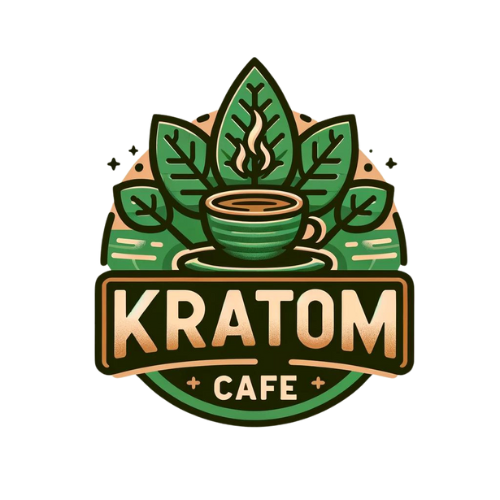Managing chronic conditions can be challenging, but natural remedies like kratom offer promising benefits.
We at Kratom Cafe are dedicated to providing you with valuable insights into how kratom can help.
From pain relief to mental health support, we explore the reasons why kratom could be a beneficial addition to your wellness routine.
How Does Kratom Help With Pain?
Kratom’s role in managing chronic pain conditions is gaining recognition, particularly as people seek natural alternatives to conventional painkillers. With millions of Americans struggling with chronic pain, the need for effective management solutions is more urgent than ever.
Alleviating Chronic Pain Symptoms
One of the primary reasons people turn to kratom is its ability to alleviate chronic pain. According to a survey by the American Kratom Association, around 68% of kratom users reported using it for pain relief. Its active compounds, mitragynine and 7-hydroxymitragynine, interact with opioid receptors in the brain, reducing pain perception. This interaction mimics the effects of traditional opioids but without the harmful side effects associated with them.
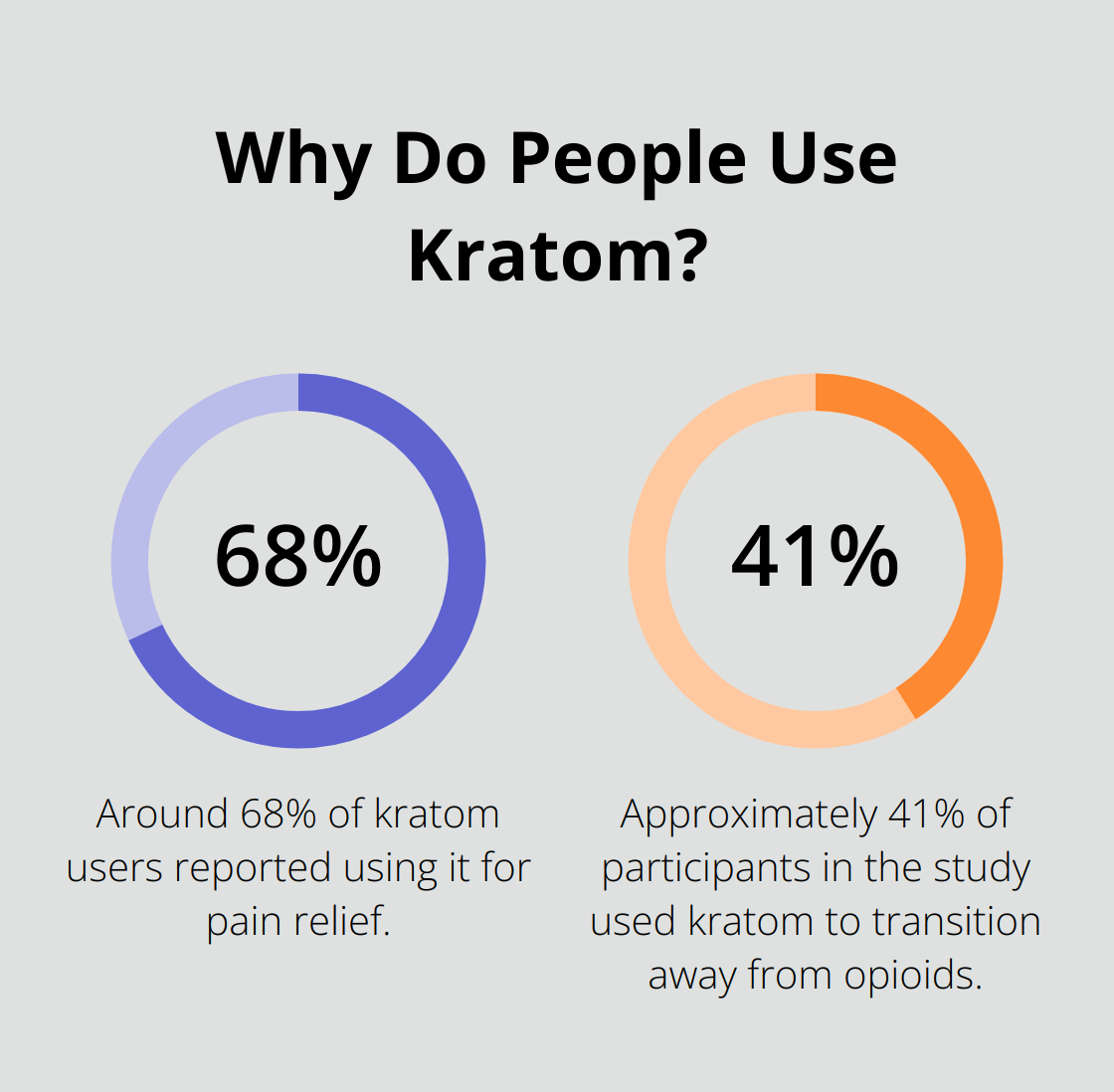
The effectiveness of kratom in managing pain can be seen in various chronic conditions such as arthritis, fibromyalgia, and back pain. For instance, a study involving individuals with arthritis pain found notable pain reduction after regular kratom use.
A Natural Alternative to Opioids
Amid the opioid crisis, kratom presents a compelling natural alternative. Opioids, though highly effective, come with a high risk of addiction and other severe side effects. In contrast, kratom users often report milder withdrawal symptoms, making it a safer option for long-term pain management.
Research published in the Journal of Psychoactive Drugs revealed that kratom could serve as a potential substitute for opioids. Approximately 41% of participants in the study used kratom to transition away from opioids due to its similar pain-relieving properties. This transition can significantly reduce the risks associated with opioid dependence and misuse.
Anti-Inflammatory Properties
Kratom’s anti-inflammatory properties offer additional benefits for chronic pain sufferers. Inflammation is a common underlying factor in many chronic pain conditions. A study on kratom’s anti-inflammatory effects, published in the “Frontiers in Pharmacology”, highlighted its ability to reduce inflammation markers in the body.
These properties make kratom particularly effective for conditions where inflammation plays a key role, such as rheumatoid arthritis and other inflammatory disorders. Individuals using kratom for natural pain relief have reported significant improvements in their symptoms, allowing for better mobility and quality of life.
Conclusion
By integrating kratom into a pain management regimen, individuals can benefit from effective symptom relief, a safer alternative to opioids, and reduced inflammation.
How Does Kratom Help Mental Health?
Reducing Anxiety and Depression
The impact of kratom on mental health is promising, especially for those dealing with anxiety and depression. Studies indicate that kratom interacts with brain pathways involved in mood regulation. According to a survey by the American Kratom Association, about 66% of users take kratom to alleviate anxiety and depressive symptoms. The active compounds, mitragynine and 7-hydroxymitragynine, bind to receptors that enhance mood and provide calming effects.
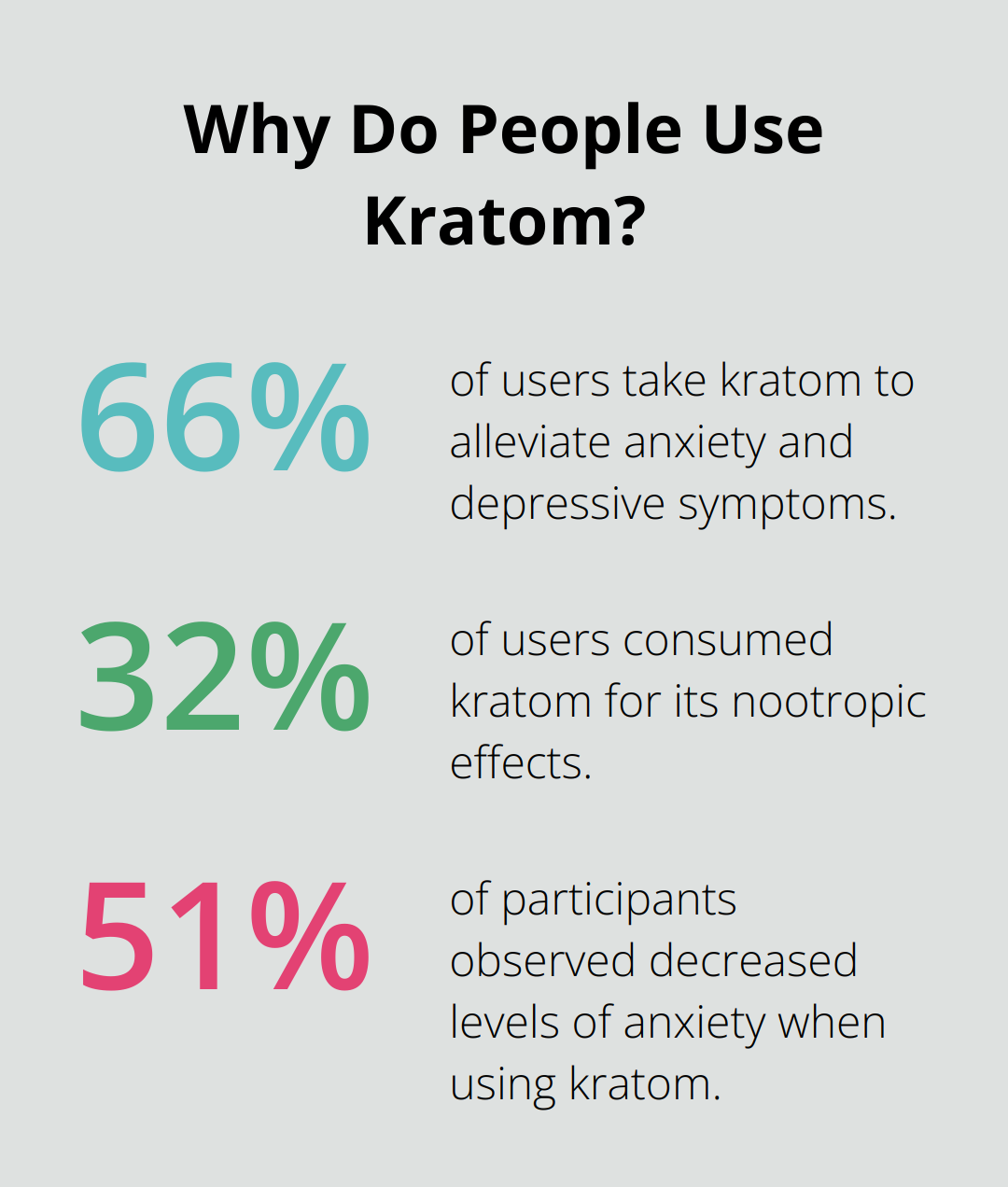
A practical tip for those considering kratom for mental health is to start with lower doses, as smaller amounts are often reported to boost energy and mood, while higher doses can have more sedative effects. For a detailed understanding, check out this guide on kratom for anxiety.
Cognitive Enhancement
Kratom’s cognitive benefits extend to improved focus and mental clarity. Users have reported enhanced cognitive function and concentration. A study published in the Journal of Psychoactive Drugs noted that approximately 32% of users consumed kratom for its nootropic effects. This is particularly beneficial for those with ADHD or other attention disorders, providing a natural alternative to traditional medications.
A common practice is to use strains like White Maeng Da, known for its stimulating and focus-enhancing properties. Practical advice includes integrating kratom into a morning or early afternoon routine to avoid potential interference with sleep.
Real-Life Testimonials
The practical benefits of kratom for mental health are best illustrated through real-life experiences. Users have shared positive outcomes in various forums and testimonials. For instance, John from Arizona reported a significant reduction in social anxiety after incorporating kratom into his wellness regimen. Similar cases highlight kratom’s effectiveness, with individuals noting improved overall mood and mental well-being.
A study featured in the International Journal of Drug Policy also supports these testimonials, emphasizing kratom’s potential role in mental health management. The study showed that 51% of participants observed decreased levels of anxiety when using kratom.
To read more about how kratom can be useful for enhancing mood and reducing anxiety, visit our article on pro tips for anxiety.
Safe Usage and Considerations
When it comes to using kratom safely, there are several key considerations that can help maximize its benefits while minimizing risks.
Recommended Dosages and Strains
Knowing the right dosage is critical. For beginners, starting with a lower dose of 1-2 grams is advisable, as this can minimize any potential side effects. For those managing chronic conditions, dosage can vary widely, but typically ranges from 2-6 grams. Some experienced users may require slightly higher doses, yet it’s crucial to adjust based on individual tolerance and needs.
Different kratom strains serve different purposes. For pain relief, Red Vein strains like Red Bali or Red Maeng Da are often recommended due to their potent analgesic properties. For mental health benefits, Green Vein strains are sought after for their balanced profile, offering both mood-enhancing and pain-relieving effects without significant sedation. Always choose high-quality, lab-tested kratom to ensure optimal effects and safety.
Potential Side Effects and Interactions
While kratom is generally well-tolerated, it’s essential to be aware of potential side effects. Common reactions include nausea, dizziness, and constipation, particularly at higher doses. Less frequently, more severe effects such as liver toxicity and seizures have been reported, especially with prolonged usage.
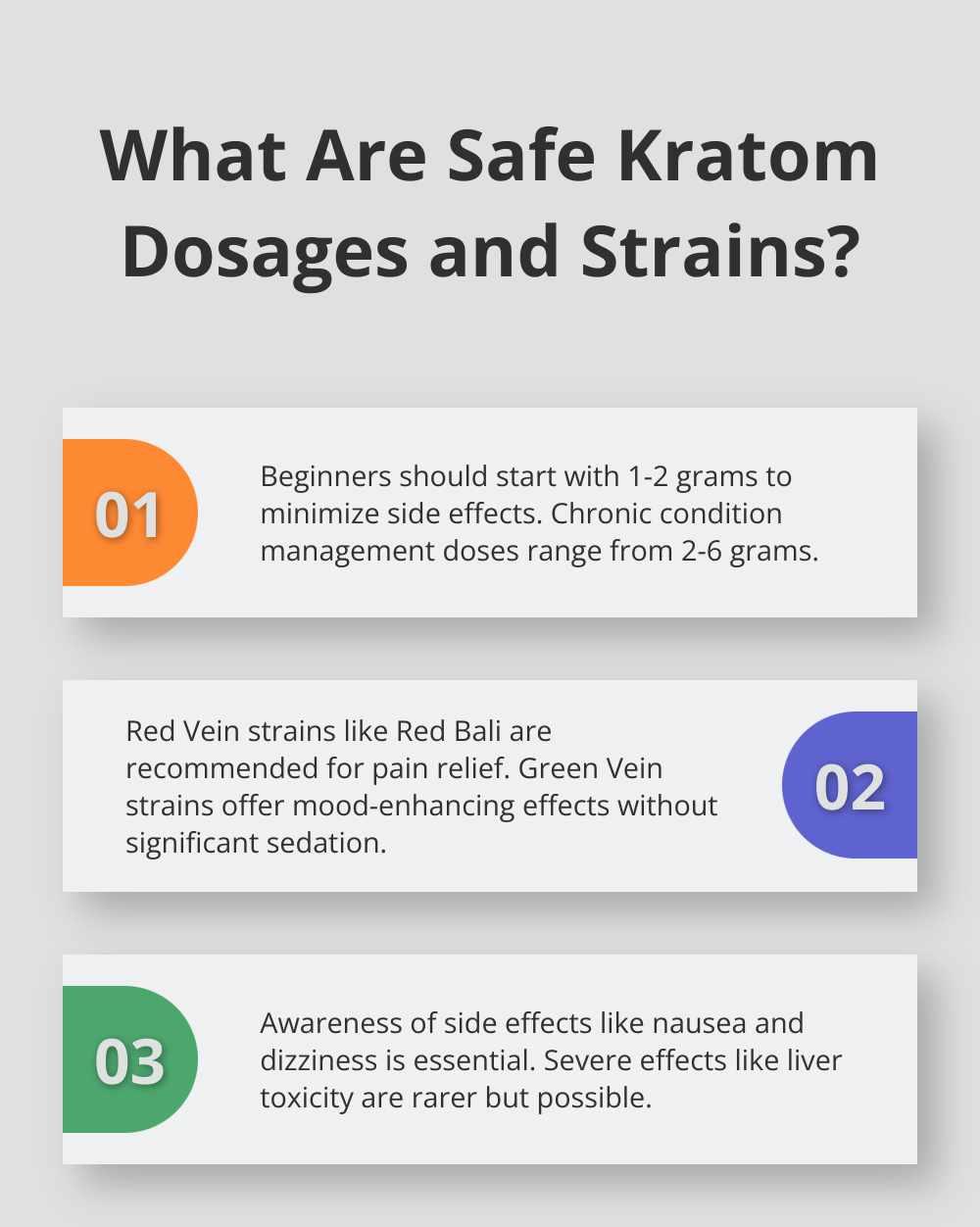
Kratom can interact with other medications and substances. Combining kratom with other central nervous system depressants like alcohol or benzodiazepines can increase the risk of respiratory depression. Similarly, using kratom alongside stimulants might compound effects like elevated heart rate and blood pressure. Consulting a healthcare provider before starting kratom is a prudent step to avoid interactions and ensure its safe integration into your routine.
Legal Status and Regulations
The legal landscape for kratom is complex and varies significantly by location. In the United States, kratom is legal at the federal level, but some states and counties have enacted bans. It’s crucial to stay informed about the regulations in your area to avoid legal repercussions. The legal status of kratom continues to evolve, with ongoing debates concerning its safety and benefits.
In 2021, the World Health Organization (WHO) announced a review of kratom to assess its safety on a global scale, which may influence future regulations. Until more definitive guidelines are established, adhering to local laws and regulations is critical for legal and safe kratom use.
Kratom holds significant promise for managing chronic conditions, but safe usage is key to reaping its benefits.
Conclusion
Kratom holds considerable promise as a natural remedy for managing chronic conditions. Its effectiveness in providing pain relief, alleviating anxiety, and enhancing cognitive function makes it an attractive option for those seeking alternatives to conventional treatments. The ability of kratom’s compounds, like mitragynine and 7-hydroxymitragynine, to interact with opioid receptors offers pain relief similar to opioids, but with a potentially lower risk of addiction and severe side effects.
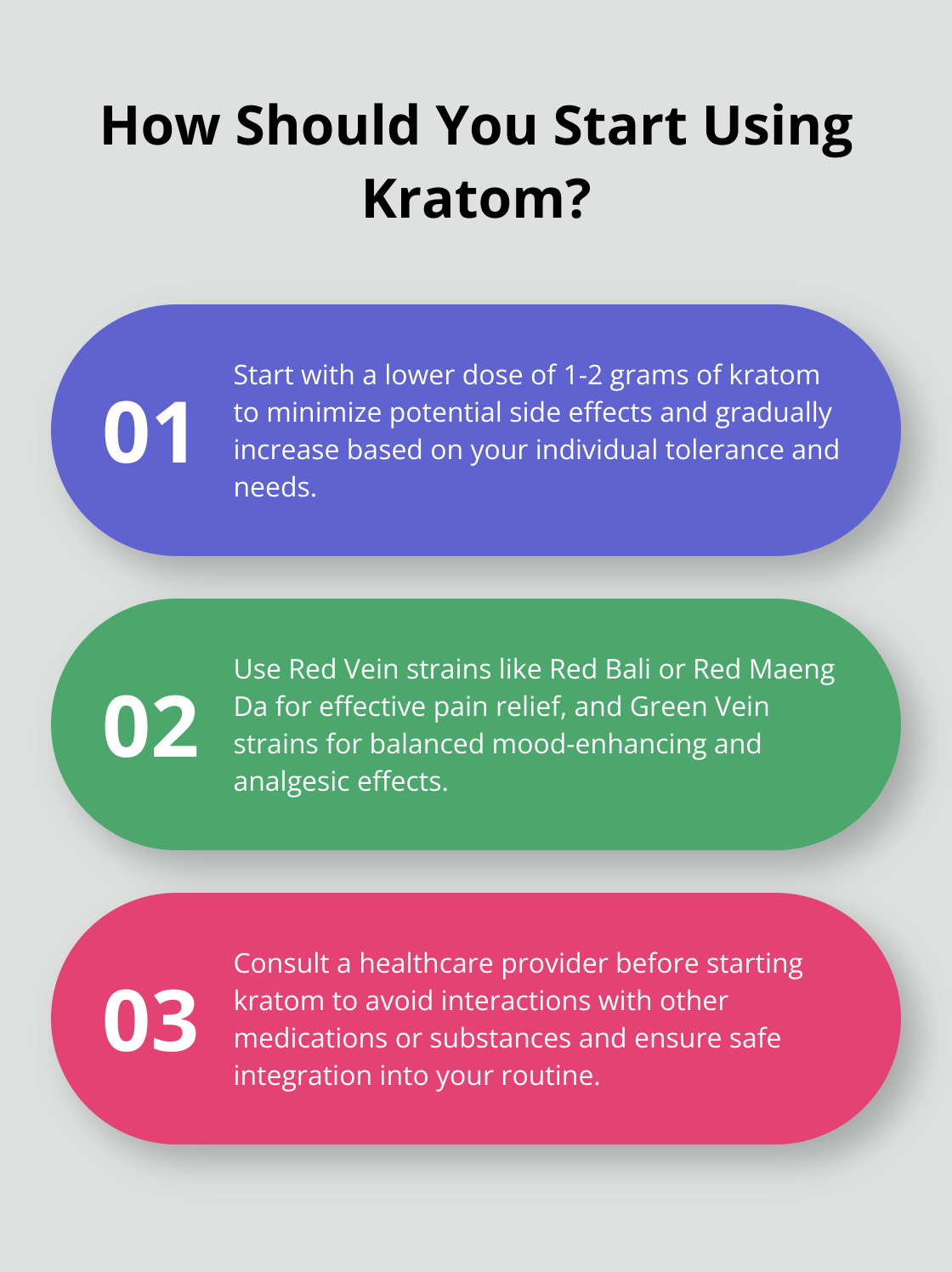
However, the importance of responsible use cannot be understated. Understanding the right dosages, being aware of potential side effects, and recognizing interactions with other substances are critical steps in ensuring safe and beneficial use. Consulting healthcare professionals before incorporating kratom into a wellness regimen is strongly advised.
Further research and innovation are essential to fully understand kratom’s safety profile and therapeutic potential. Studies on its long-term effects, standardized treatment protocols, and more precise guidelines will enhance its application and popularity. It’s important to stay informed about legal status and adhere to local regulations as they evolve.
We at Kratom Cafe are committed to providing accurate and timely information about kratom. Our platform is designed to be a comprehensive resource, offering insights into the latest research, user experiences, and expert advice. Visit us at Kratom Cafe to explore the benefits and best practices for using kratom safely and effectively.
